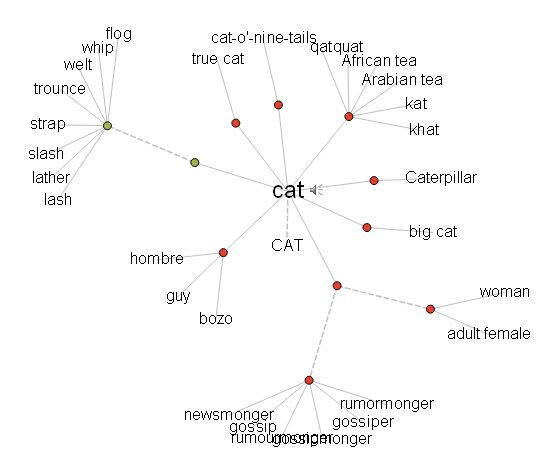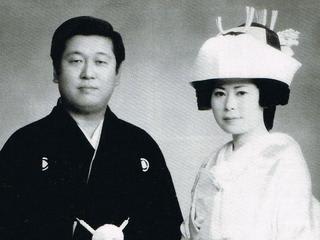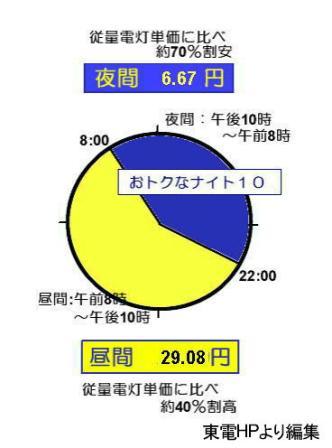Reactor and Fuel Status in Case of a Reactor Water Injection System Malfunction
東電の発表内容
Reactor and Fuel Status in Case of a Reactor Water Injection System Malfunction
原子炉冷却水注入システムの故障の場合の原子炉と燃料の状態
Page 1
1 [ Outline ] In order to achieve a cold shutdown of Units 1 to 3 at Fukushima Daiichi Nuclear Power Station, we will continue to make efforts to cool the reactors.
福島第一原子力発電所ユニット1から3の冷温停止状態を達成するために、我々は原子炉を冷却するために努力をしていきます。
・・・・・・・・・・・・・・・・・・・・・・・・・・・・・・・・・・・・・・・・・・・・・・・・・・
参考
低温停止 [CSD:Cold Shut Down]
0719
原子炉の核分裂反応が停止しており、かつ、温度が95℃以下で原子炉を冷却及び減圧している状態。普通は原子炉の定期検査 などのように長期にわたって、原子炉を停止する場合に行い、原子炉停止 後の崩壊熱 を除去するため、BWRでは残留熱除去系 、PWRでは余熱除去設備 を運転する。
7.This area will continue to be rainy.
この地域は雨が続くでしょう。
ソース www.kingsoft.jp
8.Her mother will continue to work.
彼女の母ははたらき続けるでしょう。
1.I will make effort to get up early every morning.
毎朝早起きできるように努力するつもりだ。
ソース www.kingsoft.jp
2.Make effort.
努力する。
ソース www.kingsoft.jp
3.No one can master English if he doesn't make effort.
誰だって、努力しなければ、英語をものにすることはできない。
。。。。。。。。。。。。。。。。。。。。。。。。。。。。。。。。。。。。。。。。。。。。。。。。。。。。
The reactor water injection system, the system that cools the reactor, is designed to reduce potential failure (water injection disruption) by increasing its reliability through multiplexing equipment, etc.
原子炉冷却水噴射システム、原子炉を冷却するシステムは、多重化装置などを介して、その信頼性を向上させることにより、潜在的な障害(水噴射の中断)を減らすように設計されています
Its system is also designed to immediately resume water injection in the event of a malfunction.
そのシステムはまた設計されています、故障が発生した場合に水噴射をすぐに再開するために。
・・・・・・・・・・・・・・・・・・・・・・・・・・・・・・・・・・・・・・・
参考
1.Calculating the risk which is involved in the event of failure, he demanded a show-down with the other party.
失敗のさいの危険を考慮しながら、彼は相手との対決を要求した。
ソース www.kingsoft.jp
2.In the event of rain, the game will not be held.
雨の場合はその試合は中止となる。
ソース www.kingsoft.jp
3.The event was forgotten in progress of time.
その事件は時が進むにつれて忘れ去られていった。
ソース www.kingsoft.jp
malfunction
自動詞
故障(する).
malfunction
[名](機械などが)調子の悪いこと, 機能不全
━[動](自)(機械が)うまく動かない・・・・・・・・・・・・・・・・・・・・・・・・・・・・・・・・・・・・・・・・・・・・・・・
Here, we will explain the status of the reactor and fuel in the event of malfunction regardless of cause of the reactor water injection system.
ここでは、故障時に原子炉と燃料の状態を説明します。原子炉冷却水噴射システムの原因かかわらず
Reactor and Fuel Status in Case of a Reactor Water Injection System Malfunction
原子炉冷却水注入システム故障の場合の原子炉と燃料の状況
October 1 , 2 0 1 1 Tokyo Electric Power
10月1日、2 0 1 1東京電力
Page 2
2 Status of malfunction in the reactor water injection system ( Image ) Water Reactor Pressure Vessel Water injection Steam Leakage Normal Fuel Water Water injection Steam Leakage Injection disrupted Fuel Fuel Water Water injection Steam Leakage Injection disrupted over extended time period ・Water level significantly decreases by water injection disruption over extended time period.
・Further increase in exposure of fuel ・Fuel temperature increase Water level decrease ・Imbalance of outflow (steam and leakage) and water injection causes decrease in water level.
・Increase in exposure of fuel and its temperature.
・Amount of injected water and steam/leakage are balanced, maintaining a steady water level.
・Fuel is stably-cooled. Water level decrease
Page 3
3 Assumed malfunctions in reactor water injection system Reactor Pressure Vessel Power Water injection pump Tank Pump trouble Loss of Power Loss of water source Damage to water injection line
Page 4
4 Procedures in case of a malfunction Category Status Procedure Time needed to resume water injection Pump failure Pump operation failure Resuming water injection by activating stand-by unit or emergency reactor injection pump on the hill. Approx. 30min. Power loss Power loss in operating pump Resuming water injection via emergency reactor injection pump on the hill and fire truck. Approx. 30min. Water source loss Loss of function in buffer tank(Leakage from damaged tank, etc.) Resuming water injection via switching to filtrate tank. Approx. 30min. Damage to water injection line Damage to water injection line from operating pump Resuming water injection using a different line that is from a pump besides a pure water tank. Approx. 30min. Even if either equipment malfunctions , it is possible to resume water injection to the reactor in approx. 30min.
Page 5
5 Evaluation of fuel temperature increase in case of a 1 hour disruption of injection to the reactor Evaluation conditions From a conservative perspective, it is assumed that all decay heat contributes to fuel temperature increase . (Heat radiation affecting construction material is not considered.) From a conservative perspective, the water inside the Reactor Pressure Vessel at the disruption is assumed to be zero. (Assuming that the full exposure of fuel and disruption occurs simultaneously.) Decay heat of the fuel Unit1 0.64MW,Unit2 0.91MW, Unit3 0.93MW (Evaluation value as of October 1) Specific heat of fuel 0.4kJ/kg ℃ Weight of fuel Unit1120ton,Unit2 164ton ,Unit3 164ton Result of evaluation Fuel temperature increase in case of a 1 hour disruption was estimated approx. 50 ℃ in the conservative assumption above. Unit1 Approx.48℃,Unit2 Approx.50℃, Unit3 Approx.51℃
Page 6
6 Procedures for reactor water injection disruption over an extended time period. ( simultaneous malfunction , etc.) Simultaneous loss of equipment functions for the reactor water injection system. Resuming water injection according to the damage to the water source as well as the condition of the site after re-deploying the fire truck and re-laying the injection line . Factoring in the distance of the hose laying etc. we assume it will take about 3 hours from inception to resume injection. However, time varies according to site conditions. Loss of equipment function Deployment of equipment such as fire trucks (Deployment based on water sources,amount of water injection and the environment) Resuming reactor water injection Confirming fire truck deployment,hose laying location, etc. Environment survey Hose laying
Page 7
7 If the disruption continued over an extended time period, there may be a case of rapid water-zirconium reaction when injection is resumed. Therefore, increasing the amount of injection is required to remove decay heat as well as reaction heat. For implementation, two trucks positioned one in front of the other will be connected to each reactor, and the water injecting line will consist of two parallel hoses. Time required from disruption to rapid water-zirconium reaction. Evaluation condition : Evaluation for decay heat, etc. are as same as the case of a 1 hour disruption. Initial fuel temperature 300℃ Rapid water-zirconium reaction temperature 1200℃ Evaluation result : Time required for the temperature to reach 1200 ℃ is as follows. Unit1 Approx.19 h. Unit2 Approx.18h. Unit3 Approx.18h 【Reference】 Longest disruption time for each unit at the occurrence of the accident. Unit1 Approx.14h. Unit2 Approx. 6h. Unit3 Approx. 7h. Reactor pressure vessel Fire truck Fire truck Sea Evaluation and procedures for reactor water injection disruption over an extended time period.
Page 8
8 What if the disruption time is longer than expected? Assuming that the disruption time of water injection to the reactor is longer than expected. Fuel melting and the fall of melted fuel on the Primary Containment Vessel under the conservative conditions indicated above (Approx.50 ℃ /h of temperature increase), Reaching melting point (Approx.2200 ℃ ) of eutectic ( U-Zr-O ) in approx. 38-hour disruption of water injection. Reaching melting point (Approx.2800 ℃ ) of Uranium dioxide in approx. 50-hour disruption of water injection. Temperature increase slows down under high temperatures due to the radiation effects etc. and actual time required for fuel melting tends to be longer. (Details to be evaluated) Release of a large amount of fission product to the environment Radioactive dose is expected to exceed the evacuation level(10mSv) at the boundary of the power station when a large amount of fission product is released into the environment.
Page 9
9 Summary Reliability for the reactor water injection system for cooling is increased by multiplexing equipments, etc. The assumed disruption time for each equipment is approx. 30min. Fuel temperature increase in case of a 1 hour injection disruption is approx. 50 ℃ based on a conservative assumption. Also, it will take approx. 18 ~ 19 hours to reach temperatures where the water-zirconium reaction becomes rapid following injection disruption. If the injection was disrupted for long time, the reoccurrence of melted fuel, the release of fission products to the environment etc. are assumed. The reactor water injection system is the most important system for reactor cooling. Therefore, we will continue our efforts to increase its reliability
Fukushima and Chernobyl: Myth versus Reality
NEWS
News Release
Contacts: Clay C. Perry
Senior Media Relations Manager
202-293-6184
clperry@epri.com
Brian Schimmoller
Communications Manager
704-595-2576
bschimmoller@epri.com
Report Analyzes Technical Factors Leading to Fukushima Daiichi Accident
PALO ALTO, Calif. (April 10, 2012) - The Electric Power Research Institute (EPRI) released a report today that examines the underlying technical factors leading to the loss of critical systems at the Fukushima Daiichi reactors following the earthquake and tsunami in Japan in March 2011.
The report found that parameters set for tsunami flood protection were inadequate, which led to the eventual loss of all practical cooling paths for the reactors. The plant lost access to all off-site AC power due to the earthquake and to all on-site AC power due to the submergence of backup power supplies and electrical distribution systems. Also, backup DC power was lost due to the submergence of electrical distribution systems and the depletion of power stored in batteries.
The analysis traced the flooding and submergence to the significant difference between the tsunami height the plant was designed for and the one that impacted the plant. That difference limited the ability of tsunami protection and mitigation measures to effectively address the event. The plant’s primary tsunami protection strategy consisted of locating critical equipment above the design tsunami height. In establishing a maximum tsunami height that might impact the generating station, the Japanese design method did not factor in multiple geological fault ruptures.
The report reviews the plant’s design basis for seismic and tsunami events, examines the plant’s response capabilities with respect to seismic and tsunami events, and then compares the plant’s design capabilities with the actual events. The report’s results were based on event information, incident timelines, plant design features, and regulatory and design code requirements.
“The nuclear power industry continues to learn from the Fukushima Daiichi event,” said Neil Wilmshurst, vice president at EPRI. “The knowledge gained from this analysis will inform the identification of safety improvements at nuclear plants worldwide that are both meaningful and appropriate.”
About EPRI:
The Electric Power Research Institute, Inc. (EPRI, www.epri.com) conducts research and development relating to the generation, delivery and use of electricity for the benefit of the public. An independent, nonprofit organization, EPRI brings together its scientists and engineers as well as experts from academia and industry to help address challenges in electricity, including reliability, efficiency, health, safety and the environment. EPRI's members represent more than 90 percent of the electricity generated and delivered in the United States, and international participation extends to 40 countries. EPRI's principal offices and laboratories are located in Palo Alto, Calif.; Charlotte, N.C.; Knoxville, Tenn.; and Lenox, Mass.
東電の発表内容
Reactor and Fuel Status in Case of a Reactor Water Injection System Malfunction
原子炉冷却水注入システムの故障の場合の原子炉と燃料の状態
Page 1
1 [ Outline ] In order to achieve a cold shutdown of Units 1 to 3 at Fukushima Daiichi Nuclear Power Station, we will continue to make efforts to cool the reactors.
福島第一原子力発電所ユニット1から3の冷温停止状態を達成するために、我々は原子炉を冷却するために努力をしていきます。
・・・・・・・・・・・・・・・・・・・・・・・・・・・・・・・・・・・・・・・・・・・・・・・・・・
参考
低温停止 [CSD:Cold Shut Down]
0719
原子炉の核分裂反応が停止しており、かつ、温度が95℃以下で原子炉を冷却及び減圧している状態。普通は原子炉の定期検査 などのように長期にわたって、原子炉を停止する場合に行い、原子炉停止 後の崩壊熱 を除去するため、BWRでは残留熱除去系 、PWRでは余熱除去設備 を運転する。
7.This area will continue to be rainy.
この地域は雨が続くでしょう。
ソース www.kingsoft.jp
8.Her mother will continue to work.
彼女の母ははたらき続けるでしょう。
1.I will make effort to get up early every morning.
毎朝早起きできるように努力するつもりだ。
ソース www.kingsoft.jp
2.Make effort.
努力する。
ソース www.kingsoft.jp
3.No one can master English if he doesn't make effort.
誰だって、努力しなければ、英語をものにすることはできない。
。。。。。。。。。。。。。。。。。。。。。。。。。。。。。。。。。。。。。。。。。。。。。。。。。。。。
The reactor water injection system, the system that cools the reactor, is designed to reduce potential failure (water injection disruption) by increasing its reliability through multiplexing equipment, etc.
原子炉冷却水噴射システム、原子炉を冷却するシステムは、多重化装置などを介して、その信頼性を向上させることにより、潜在的な障害(水噴射の中断)を減らすように設計されています
Its system is also designed to immediately resume water injection in the event of a malfunction.
そのシステムはまた設計されています、故障が発生した場合に水噴射をすぐに再開するために。
・・・・・・・・・・・・・・・・・・・・・・・・・・・・・・・・・・・・・・・
参考
1.Calculating the risk which is involved in the event of failure, he demanded a show-down with the other party.
失敗のさいの危険を考慮しながら、彼は相手との対決を要求した。
ソース www.kingsoft.jp
2.In the event of rain, the game will not be held.
雨の場合はその試合は中止となる。
ソース www.kingsoft.jp
3.The event was forgotten in progress of time.
その事件は時が進むにつれて忘れ去られていった。
ソース www.kingsoft.jp
malfunction
自動詞
故障(する).
malfunction
[名](機械などが)調子の悪いこと, 機能不全
━[動](自)(機械が)うまく動かない・・・・・・・・・・・・・・・・・・・・・・・・・・・・・・・・・・・・・・・・・・・・・・・
Here, we will explain the status of the reactor and fuel in the event of malfunction regardless of cause of the reactor water injection system.
ここでは、故障時に原子炉と燃料の状態を説明します。原子炉冷却水噴射システムの原因かかわらず
Reactor and Fuel Status in Case of a Reactor Water Injection System Malfunction
原子炉冷却水注入システム故障の場合の原子炉と燃料の状況
October 1 , 2 0 1 1 Tokyo Electric Power
10月1日、2 0 1 1東京電力
Page 2
2 Status of malfunction in the reactor water injection system ( Image ) Water Reactor Pressure Vessel Water injection Steam Leakage Normal Fuel Water Water injection Steam Leakage Injection disrupted Fuel Fuel Water Water injection Steam Leakage Injection disrupted over extended time period ・Water level significantly decreases by water injection disruption over extended time period.
・Further increase in exposure of fuel ・Fuel temperature increase Water level decrease ・Imbalance of outflow (steam and leakage) and water injection causes decrease in water level.
・Increase in exposure of fuel and its temperature.
・Amount of injected water and steam/leakage are balanced, maintaining a steady water level.
・Fuel is stably-cooled. Water level decrease
Page 3
3 Assumed malfunctions in reactor water injection system Reactor Pressure Vessel Power Water injection pump Tank Pump trouble Loss of Power Loss of water source Damage to water injection line
Page 4
4 Procedures in case of a malfunction Category Status Procedure Time needed to resume water injection Pump failure Pump operation failure Resuming water injection by activating stand-by unit or emergency reactor injection pump on the hill. Approx. 30min. Power loss Power loss in operating pump Resuming water injection via emergency reactor injection pump on the hill and fire truck. Approx. 30min. Water source loss Loss of function in buffer tank(Leakage from damaged tank, etc.) Resuming water injection via switching to filtrate tank. Approx. 30min. Damage to water injection line Damage to water injection line from operating pump Resuming water injection using a different line that is from a pump besides a pure water tank. Approx. 30min. Even if either equipment malfunctions , it is possible to resume water injection to the reactor in approx. 30min.
Page 5
5 Evaluation of fuel temperature increase in case of a 1 hour disruption of injection to the reactor Evaluation conditions From a conservative perspective, it is assumed that all decay heat contributes to fuel temperature increase . (Heat radiation affecting construction material is not considered.) From a conservative perspective, the water inside the Reactor Pressure Vessel at the disruption is assumed to be zero. (Assuming that the full exposure of fuel and disruption occurs simultaneously.) Decay heat of the fuel Unit1 0.64MW,Unit2 0.91MW, Unit3 0.93MW (Evaluation value as of October 1) Specific heat of fuel 0.4kJ/kg ℃ Weight of fuel Unit1120ton,Unit2 164ton ,Unit3 164ton Result of evaluation Fuel temperature increase in case of a 1 hour disruption was estimated approx. 50 ℃ in the conservative assumption above. Unit1 Approx.48℃,Unit2 Approx.50℃, Unit3 Approx.51℃
Page 6
6 Procedures for reactor water injection disruption over an extended time period. ( simultaneous malfunction , etc.) Simultaneous loss of equipment functions for the reactor water injection system. Resuming water injection according to the damage to the water source as well as the condition of the site after re-deploying the fire truck and re-laying the injection line . Factoring in the distance of the hose laying etc. we assume it will take about 3 hours from inception to resume injection. However, time varies according to site conditions. Loss of equipment function Deployment of equipment such as fire trucks (Deployment based on water sources,amount of water injection and the environment) Resuming reactor water injection Confirming fire truck deployment,hose laying location, etc. Environment survey Hose laying
Page 7
7 If the disruption continued over an extended time period, there may be a case of rapid water-zirconium reaction when injection is resumed. Therefore, increasing the amount of injection is required to remove decay heat as well as reaction heat. For implementation, two trucks positioned one in front of the other will be connected to each reactor, and the water injecting line will consist of two parallel hoses. Time required from disruption to rapid water-zirconium reaction. Evaluation condition : Evaluation for decay heat, etc. are as same as the case of a 1 hour disruption. Initial fuel temperature 300℃ Rapid water-zirconium reaction temperature 1200℃ Evaluation result : Time required for the temperature to reach 1200 ℃ is as follows. Unit1 Approx.19 h. Unit2 Approx.18h. Unit3 Approx.18h 【Reference】 Longest disruption time for each unit at the occurrence of the accident. Unit1 Approx.14h. Unit2 Approx. 6h. Unit3 Approx. 7h. Reactor pressure vessel Fire truck Fire truck Sea Evaluation and procedures for reactor water injection disruption over an extended time period.
Page 8
8 What if the disruption time is longer than expected? Assuming that the disruption time of water injection to the reactor is longer than expected. Fuel melting and the fall of melted fuel on the Primary Containment Vessel under the conservative conditions indicated above (Approx.50 ℃ /h of temperature increase), Reaching melting point (Approx.2200 ℃ ) of eutectic ( U-Zr-O ) in approx. 38-hour disruption of water injection. Reaching melting point (Approx.2800 ℃ ) of Uranium dioxide in approx. 50-hour disruption of water injection. Temperature increase slows down under high temperatures due to the radiation effects etc. and actual time required for fuel melting tends to be longer. (Details to be evaluated) Release of a large amount of fission product to the environment Radioactive dose is expected to exceed the evacuation level(10mSv) at the boundary of the power station when a large amount of fission product is released into the environment.
Page 9
9 Summary Reliability for the reactor water injection system for cooling is increased by multiplexing equipments, etc. The assumed disruption time for each equipment is approx. 30min. Fuel temperature increase in case of a 1 hour injection disruption is approx. 50 ℃ based on a conservative assumption. Also, it will take approx. 18 ~ 19 hours to reach temperatures where the water-zirconium reaction becomes rapid following injection disruption. If the injection was disrupted for long time, the reoccurrence of melted fuel, the release of fission products to the environment etc. are assumed. The reactor water injection system is the most important system for reactor cooling. Therefore, we will continue our efforts to increase its reliability
Fukushima and Chernobyl: Myth versus Reality
NEWS
News Release
Contacts: Clay C. Perry
Senior Media Relations Manager
202-293-6184
clperry@epri.com
Brian Schimmoller
Communications Manager
704-595-2576
bschimmoller@epri.com
Report Analyzes Technical Factors Leading to Fukushima Daiichi Accident
PALO ALTO, Calif. (April 10, 2012) - The Electric Power Research Institute (EPRI) released a report today that examines the underlying technical factors leading to the loss of critical systems at the Fukushima Daiichi reactors following the earthquake and tsunami in Japan in March 2011.
The report found that parameters set for tsunami flood protection were inadequate, which led to the eventual loss of all practical cooling paths for the reactors. The plant lost access to all off-site AC power due to the earthquake and to all on-site AC power due to the submergence of backup power supplies and electrical distribution systems. Also, backup DC power was lost due to the submergence of electrical distribution systems and the depletion of power stored in batteries.
The analysis traced the flooding and submergence to the significant difference between the tsunami height the plant was designed for and the one that impacted the plant. That difference limited the ability of tsunami protection and mitigation measures to effectively address the event. The plant’s primary tsunami protection strategy consisted of locating critical equipment above the design tsunami height. In establishing a maximum tsunami height that might impact the generating station, the Japanese design method did not factor in multiple geological fault ruptures.
The report reviews the plant’s design basis for seismic and tsunami events, examines the plant’s response capabilities with respect to seismic and tsunami events, and then compares the plant’s design capabilities with the actual events. The report’s results were based on event information, incident timelines, plant design features, and regulatory and design code requirements.
“The nuclear power industry continues to learn from the Fukushima Daiichi event,” said Neil Wilmshurst, vice president at EPRI. “The knowledge gained from this analysis will inform the identification of safety improvements at nuclear plants worldwide that are both meaningful and appropriate.”
About EPRI:
The Electric Power Research Institute, Inc. (EPRI, www.epri.com) conducts research and development relating to the generation, delivery and use of electricity for the benefit of the public. An independent, nonprofit organization, EPRI brings together its scientists and engineers as well as experts from academia and industry to help address challenges in electricity, including reliability, efficiency, health, safety and the environment. EPRI's members represent more than 90 percent of the electricity generated and delivered in the United States, and international participation extends to 40 countries. EPRI's principal offices and laboratories are located in Palo Alto, Calif.; Charlotte, N.C.; Knoxville, Tenn.; and Lenox, Mass.






































